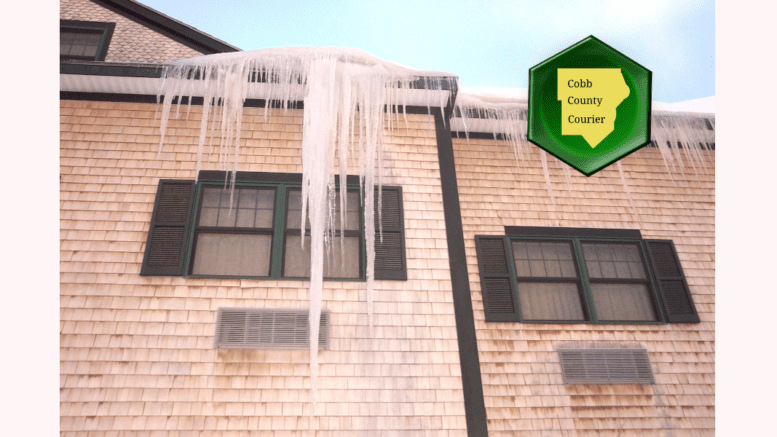A freeze warning is in effect for Cobb County and other parts of the region on Tuesday, March 21, but then warmer weather is on the way.
What is in the statement?
The statement gives the following details (the reference to “this evening” refers to last night when the warning was first issued):
…FREEZE WARNING REMAINS IN EFFECT UNTIL 10 AM EDT THIS
MORNING…
* WHAT…Sub-freezing temperatures as low as 30 expected.
* WHERE…Portions of north and central Georgia.
* WHEN…From 11 PM this evening to 10 AM EDT Tuesday.
* IMPACTS…Frost and freeze conditions will kill crops, other
sensitive vegetation and possibly damage unprotected outdoor
plumbing.
What counties are affected?
The following counties are included in the hazardous weather outlook:
Dade, Walker, Catoosa, Whitfield, Murray, Fannin, Gilmer, Union, Towns, Chattooga, Gordon, Pickens, Dawson, Lumpkin, White, Floyd, Bartow, Cherokee, Forsyth, Hall, Banks, Jackson, Madison, Polk, Paulding, Cobb, North Fulton, Gwinnett, Barrow, Clarke, Oconee, Oglethorpe, Wilkes, Haralson, Carroll, Douglas, South Fulton, DeKalb, Rockdale, Walton, Newton, Morgan, Greene, Taliaferro, Heard, Coweta, Fayette, Clayton, Spalding, Henry, Butts, Jasper, Putnam, Hancock, Warren, Troup, Meriwether, Pike, Lamar, Monroe, Jones, Baldwin, Washington, Glascock, Jefferson
Including the cities of Calhoun, Dahlonega, Cleveland, Rome, Cartersville, Gainesville, Marietta, Atlanta, Lawrenceville, Athens, Carrollton, Douglasville, East Point, Decatur, Conyers, Covington, Newnan, Peachtree City, Griffin, and Milledgeville
What is the difference between a freeze watch and a freeze warning?
In its Warnings Defined page, the National Weather Service describes freeze watch and freeze warning as follows:
Freeze Watch
A Freeze Watch is issued when there is a potential for significant, widespread freezing temperatures within the next 24-36 hours.
A Freeze Watch is issued in the autumn until the end of the growing season (marked by the occurrence of first widespread freeze). The normal end of the growing season is mid to late October west of the Blue Ridge and early November east of the Blue Ridge. However, during anomalously warm autumns, the growing season may be extended past the normal end of the growing season.
A Freeze Watch is issued in the spring at the start of the growing season (when it is late enough to cause damage to new plants and crops).
Freeze Warning
A Freeze Warning is issued when significant, widespread freezing temperatures are expected.
A Freeze Warning is issued in the autumn until the end of the growing season (marked by the occurrence of first widespread freeze). The normal end of the growing season is mid to late October west of the Blue Ridge and early November east of the Blue Ridge. However, during anomalously warm autumns, the growing season may be extended past the normal end of the growing season.
A Freeze Warning is issued in the spring at the start of the growing season (when it is late enough to cause damage to new plants and crops).
So a freeze watch is when there is a potential for freezing weather, a freeze warning is when it’s actually expected.
What precautions are recommended?
The National Weather Service recommends the following precautions for a freeze watch:
“Take steps now to protect tender plants from the cold.
“To prevent freezing and possible bursting of outdoor water pipes they should
be wrapped, drained, or allowed to drip slowly.
“Those that have in-ground sprinkler systems should drain them and cover above-
ground pipes to protect them from freezing.”
About the National Weather Service
The National Weather Service (NWS) is a part of the National Oceanic and Atmospheric Administration (NOAA).
The NWS describes its role as follows:
“The National Weather Service (NWS) provides weather, water, and climate forecasts and warnings for the United States, its territories, adjacent waters and ocean areas, for the protection of life and property and the enhancement of the national economy.
“These services include Forecasts and Observations, Warnings, Impact-based Decision Support Services, and Education in an effort to build a Weather-Ready Nation. The ultimate goal is to have a society that is prepared for and responds to weather, water and climate events.”
>>> Read all the Cobb County Courier climate and weather coverage by following this link.
